Giant Schnauzer
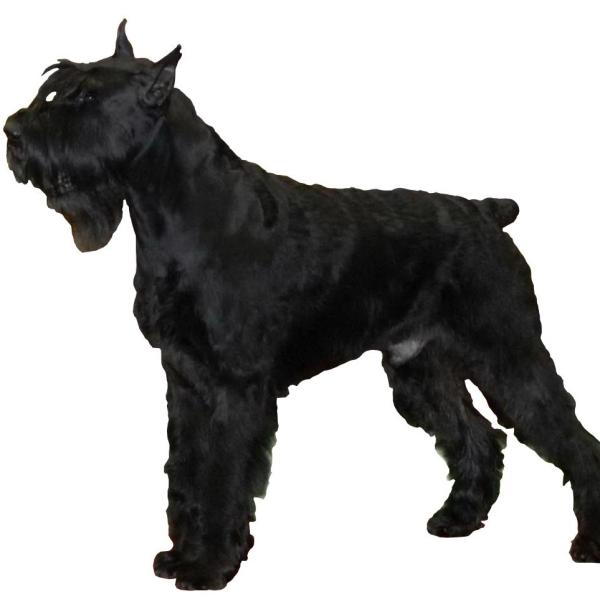
Because of their kinship with the schnauzer and their past as a shepherd dog, Giant Schnauzers are large, robust and strong dogs. They serve both as surveillance and protection dogs. Being so big, they need a good dose of daily exercise, so we do not recommend this dog for people who do not have time to take long walks or play with them. They are independent, intelligent, active and loyal dogs that with correct training and exercise, are able to develop many skills.
In this AnimalWised breed file we discuss you all the necessary information you need if you are thinking about adopting a giant schnauzer.
- Europe
- Germany
- Group II
- 5-14
- 14-18
- 18-22
- 22-27
- 27-31
- More than 31
- 2-7
- 7-22
- 22-55
- 55-100
- 100-220
- 8-10
- 10-12
- 12-14
- 15-20
- Low
- Meidum
- High
Origin of a Giant Schnauzer
This breed originates from Germany, like its cousin the schnauzer. German breeders were so impressed with the qualities of the schnauzer that they decided to create a new breed that had the same qualities, but was bigger. This big size was a necessary quality in order to handle cattle. There is no record of the crossings made to obtain the giant schnauzer, but it is believed that this breed holds Danish blood from the bouvier des Flandres.
With the passage of time, the giant schnauzer demonstrated its qualities as a guard dog . During the Second World War, this breed lost its popularity, but at the end of the war its population grew again.
Today it is a well-known breed. Its popularity is moderate and it is mainly used as a pet. Police forces appreciate this breed as they can benefit from all of its best qualities.
Physical Characteristics of a Giant Schnauzer
According to the FCI standard of this breed, the height at the withers, for both males and females, ranges between 60 and 70 centimeters. The ideal weight for both males and females is between 35 and 47 kilograms. The overall appearance of this dog is exactly the same as that of the schnauzer, the only main difference is its size. It is a large, strong and robust dog, with a height at the cross equal to the length of its body. Its back is short and strong, and descends slightly from the cross to the end of the dog. It has a slightly rounded rump. Its chest is moderately wide and deep, reaching up to its elbows.
The head of the giant schnauzer is distinct and it carries bushy eyebrows. It’s face is strong and elongated. Its forehead is flat and its occiput is not very marked. Its naso-frontal depression, is well marked under the eyebrows. Its snout is straight with a wedge-shaped truncated. It’s face is covered with thick fur that simulates that of a mustache and beard. Its lips are black and well attached. It has a scissor bite. Its eyes are oval, medium and dark. It carries a vivacious expression. Its ears are of high insertion and symbolize a "V" shape. Their ears where formally cut to meet the breed standard, but fortunately, today, standard demands do not include the mutilation of dogs.
Its tail should be shaped like a saber or sickle. Today the FCI standard of the breed demands that the tail remain natural and uncut. Formerly, tail amputation in this breed was demanded. But fortunately, due to its unethical practice, it is slowly disappearing.
Its coat is composed of a dense fleece and a hard external which is well attached to its body. It has a hard, wired and dense general coat. Its beard on the snout and very bushy eyebrows are characteristic of this breed. Color-wise, we can see this breed in pure black or ‘‘salt and pepper’’.
Character of a Giant Schnauzer
This breed carries a stable temperament. They are known to be very intelligent, loyal, courageous and active. They love to play and enjoy outdoor physical activities. They are usually territorial and reserved, therefore they can become aggressive if they are not properly educated. If trained correctly, you can find yourself with one of the best guard or defense dogs.
If these dogs are properly socialized from when they are puppies, they can get along well with others of their kind, people and pets of other species. When they live in the right environment and are educated and socialized correctly, giant schnauzers can be exceptional pets. Their temperament allows them to become great companions for dynamic people who enjoy physical activities. They are also well suited for families with older children and young people. They are not the best pets for families with small children, since these dogs enjoy rough games and can be very clumsy with children.
How To Care for a Giant Schnauzer
This breed’s fur is not difficult to maintain, but does demand certain care. It is necessary to brush their coat two to three times a week to avoid it getting tangled and knotted. In addition, it is important to clean their beards after meals, this is done to remove food remains that can generate bad odors. It is also recommended to take these dogs to a canine hairdresser about three times a year. The Giant Schnauzer loses very little hair and does not carry a strong smell. Before taking this dog to a canine hairdresser it is important to accustom this breed to use dog carriers. This way, it will feel comfortable and safe it has to wait locked in a carrier.
This dog needs a lot of exercise. To keep this breed happy it is necessary to take him for walks three times a day and allow him to do a good amount of exercise. This dog also needs to play games, and if possible, play with other dogs.. Of course, it should only play with dogs that it gets along with. Canine sports like freestyle and agility work well with this breed, as they allow it to release its energy in a controlled manner.
Like the schnauzer and the miniature schnauzer, the giant schnauzer is an independent dog. However, this breed should not be left alone for long periods of time. Despite its independence, it needs frequent company. This dog is not apt to live in flats as it is so big and dynamic and needs space.However, he can get to adapt to life in an apartment if he receives many walks and is very well educated. Either way, it is that this dog has a garden, so that it can spend time both inside and outside.
Educating a Giant Schnauzer
The giant schnauzer responds well to different styles of dog training, but can go stubborn when treated with punishment. In those cases it rebels or becomes completely inhibited. Therefore, it is best to train this dog through positive reinforcement, such as clicker training.
Due to their size and dynamism, these dogs can sometimes develop problematic behavior. They can become ‘‘destroyers ’’ if they are left alone for a long time or if they do not receive enough exercise. They can also present problems of aggression when they have not been socialized correctly.
Health of a Giant Schnauzer
Like many current dog breeds, the giant schnauzer is predisposed to some canine diseases. The most common health problems in this breed are;
- cancer
- gastric torsion
- epilepsy
- hip dysplasia.
This breed can also hurt its joints by jumping when they are puppies, so it is good to avoid rough games and high jumps when the dogs are not yet fully developed.
Giant Schnauzer photos
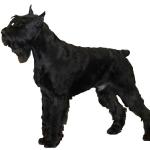

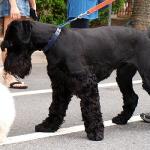
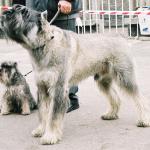


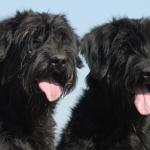


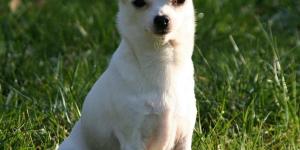

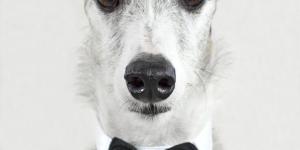


 Good day
Good day







